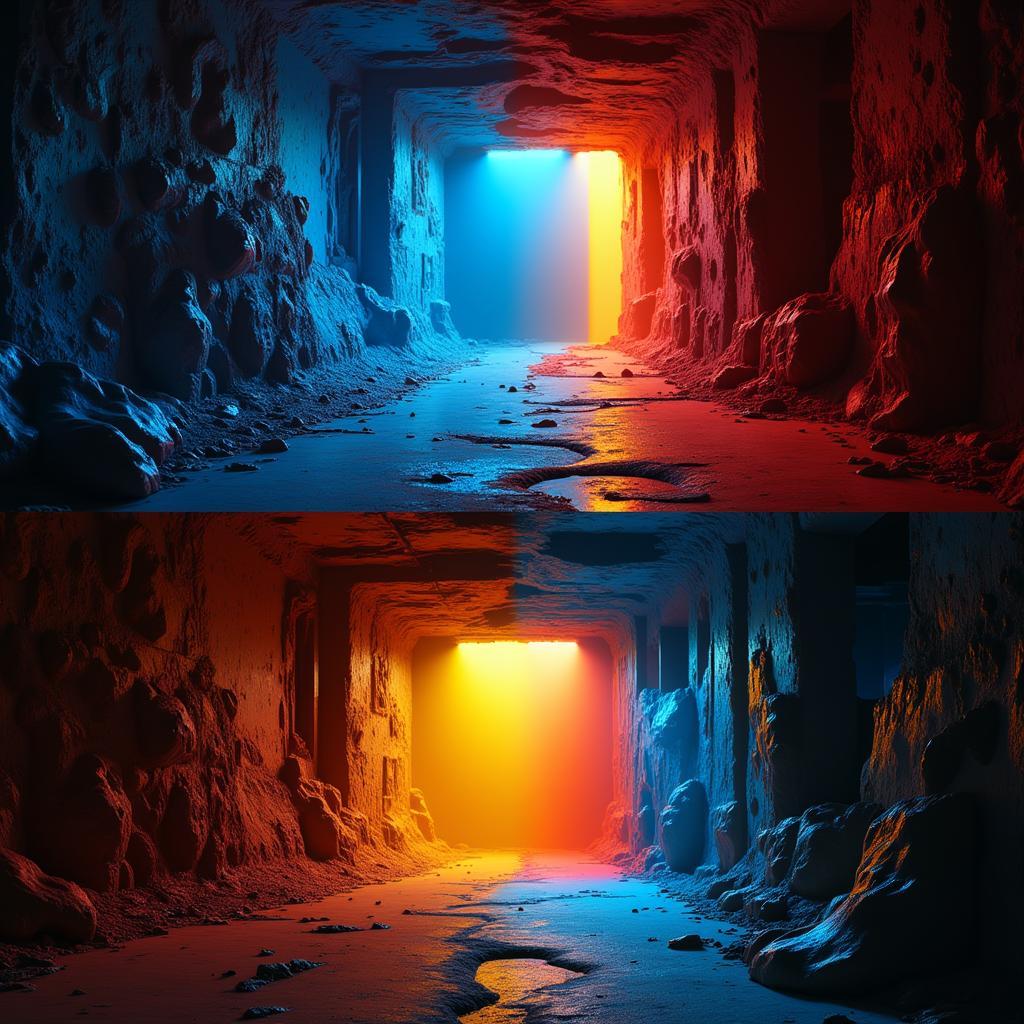The world is a vibrant tapestry of colors, from the lush green of a summer forest to the fiery hues of a setting sun. Yet, have you ever stopped to wonder, “Do Colors Actually Exist?”. This seemingly simple question opens up a fascinating world of science, philosophy, and the intricacies of human perception.
Unraveling the Nature of Color: It’s All in Your Head
The surprising answer is that colors, as we perceive them, don’t exist independently in the physical world. The colors we see are a product of our brains interpreting light waves reflected off objects. To understand this, let’s delve into the science behind it:
- Light Waves and Wavelengths: Light itself is an electromagnetic wave, carrying energy in oscillating electric and magnetic fields. These waves have varying lengths, known as wavelengths, which determine the colors we perceive.
- Reflection and Absorption: When light hits an object, certain wavelengths are absorbed while others are reflected. The reflected wavelengths reach our eyes and are interpreted by our brains as specific colors. For instance, a ripe strawberry absorbs most wavelengths except for those in the red spectrum, which are reflected, making the strawberry appear red.
- The Role of the Eye and Brain: The eye acts as a receiver, capturing the reflected light waves through specialized cells called cones in the retina. These cones are sensitive to different wavelengths corresponding to red, green, and blue light.
- Color Processing in the Brain: The signals from the cones are then transmitted to the brain’s visual cortex, where they are processed and interpreted as colors. The brain compares the signals from different cones to determine the hue, saturation, and brightness of the color we perceive.
The Subjectivity of Color: Why We Don’t All See the Same
While the basic principles of color perception are universal, there can be variations in how individuals perceive specific colors. This subjectivity is influenced by several factors:
- Physiological Differences: The number and sensitivity of cones in our eyes can differ slightly, leading to subtle variations in color perception between individuals. For example, some people might be more sensitive to certain shades of green than others.
- Cultural Background: Culture plays a significant role in how we name, categorize, and interpret colors. Certain cultures might have more words for specific shades or associate colors with different emotions and meanings.
- Personal Experiences: Our individual experiences and memories can also shape our perception of color. A specific shade of blue might evoke feelings of tranquility in one person due to a childhood memory, while another person might associate it with sadness.
Color Illusions: When Our Brains Trick Us
The subjective nature of color perception is further highlighted by color illusions, where our brains are tricked into seeing colors that aren’t actually present. These illusions demonstrate how our brains actively construct our visual reality based on context, expectations, and the interplay of different visual cues.
 An Optical Illusion Demonstrating Color Perception
An Optical Illusion Demonstrating Color Perception
The Philosophical Implications: Does Color Exist Outside Our Minds?
The scientific understanding of color perception raises profound philosophical questions about the nature of reality and our subjective experience of it. If colors are ultimately constructs of our brains, do they truly exist outside of our minds?
- Realism vs. Anti-Realism: This debate centers around whether colors are objective properties of the physical world (realism) or merely subjective experiences created by our minds (anti-realism).
- The Problem of Qualia: Philosophers use the term “qualia” to refer to the subjective, qualitative experiences of our conscious awareness, such as the redness of red or the sweetness of sugar. The challenge lies in explaining how these subjective experiences arise from physical processes in the brain.
Conclusion: Appreciating the Wonder of Color
While the question of whether colors “actually exist” might not have a definitive answer, understanding the science behind color perception allows us to appreciate the beauty and complexity of this phenomenon. Colors, though ultimately constructs of our brains, enrich our lives immeasurably, influencing our emotions, behaviors, and interactions with the world around us.
So, the next time you marvel at a vibrant sunset or find yourself drawn to a particular hue, remember that you’re witnessing the fascinating interplay of light, biology, and the extraordinary capabilities of the human mind.
FAQ:
- If colors don’t exist, why do objects appear to have consistent colors?
Objects appear to have consistent colors because they consistently absorb and reflect the same wavelengths of light. - Do animals see color differently than humans?
Yes, many animals perceive color differently than humans. Some animals have more or fewer types of cones in their eyes, allowing them to see a broader or narrower spectrum of colors. - Can color blindness be cured?
Most types of color blindness are caused by genetic factors and cannot be cured. However, there are special glasses and contact lenses that can help individuals with color blindness perceive colors more accurately.
Do you have more questions about color?
For more information about color theory, the science of color perception, or to learn more about our services at Color Box Hanoi, please explore these related articles:
Contact us today! Our team at Color Box Hanoi is dedicated to helping you create vibrant and inspiring spaces that reflect your unique style.
Phone Number: 0373298888
Email: [email protected]
Address: 86 Cầu Giấy, Hà Nội.
We have a 24/7 customer support team ready to assist you.